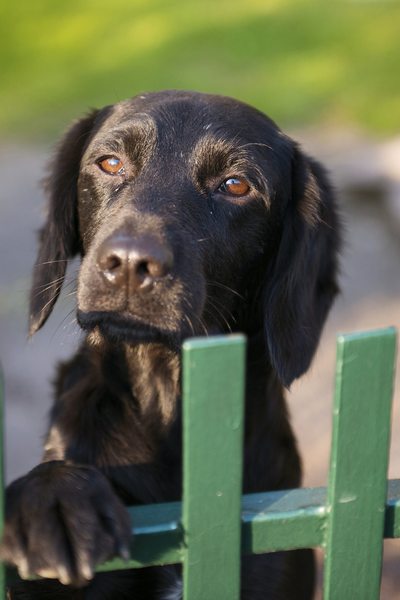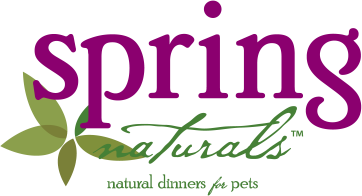
Yard Security and Safety for Your Dog
Dogs love their freedom …to run, play, and explore. Yet, dog owners know that giving our beloved dogs the freedom they truly need to have an enjoyable life also comes with responsibility. And, it is our responsibility to make certain they are safe- especially when they are off-leash.
Creating a safe and secure outdoor environment- whether you let your dog roam freely in the backyard or around your entire property should always be a top priority for pet owners. If you have a dog, or even multiple pups, you know how much your furry four-legged friend loves to run and be outside. In fact, there is nothing more freeing for you and your dog when you can just let them out to play or do their business in a fenced in, dog-friendly backyard. Even leaving your dog alone in a sizeable run, with a dog house as shelter, can provide extra security for your pup when you are busy in the house or are off doing errands.
Yet, as many of us know, a dog’s curiosity can sometimes get the best of them. One sniff of a potential playmate outside the fence, a neighbor walking nearby, or a squirrel running through the yard is enough to turn them into a master escape artist-where they’ll jump the fence by any means or feverishly try to tunnel their way out. Not surprising, there are also some dogs who are relentless chewers; and, they’ll chew and chew until they have made a hole big enough to slip through the fence. Even when we feel confident our dogs will be safe because of the security measures we’ve put into place- they can catch us off guard and perform amazing Houdini-like feats when their only focus is getting to what awaits them on the other side.
Why Is Yard Security and Safety Important for Your Dog?
Keeping your dog safe and secure should always be a priority
Yard security and safety is so important for both you and your dog. Fencing helps keep your dog from running off and decreases the risk of getting hit by a car, being exposed to disease, hurting someone in the neighborhood, fighting with other dogs, being stolen by a stranger, or even getting picked up by your local animal control.
We love our pups so much we treat them as family- so, we know that keeping them safe and secure will help ensure they have a long and happy life. Whether you let your dog out for just a short time to do their ‘business or they spend the entire day playing in your backyard, one of your most important jobs as a pet owner will be making sure they can’t get hurt or escape. Creating a dog-friendly backyard can give you peace of mind knowing you’ve done everything you can to make certain your pup is safe and content while they spend time alone in their own yard.
The truth is, when you let a dog outside, some pups will become hyper-energized and overly inquisitive. This type of dog just seems destined to get into trouble when left on their own; while others are completely content being outside just lying in the shade and taking the occasional walk around the yard for some exercise. Knowing your dog’s habits and disposition will be key to choosing the best type of yard security for your canine.
Best Yard Security for Keeping Your Dog Safe
Fencing
Hands-down fencing is the absolute best choice for keeping your dog safe and secure in the backyard. As with any type of fencing you decide to install around your property (with the exception of an invisible fence), you’ll want to also consider the following factors: the size, railing spacing, distance from the ground, and whether it is climb-proof.
Types of fencing
- Invisible/Electric
- Solid Wood or wood slat
- Chain link
- Aluminum
- Vinyl
- Plastic
Fencing Safety Tips
- Electric fencing can work well at keeping your dog from roaming; however, it doesn’t stop people, other dogs, or animals from coming into your yard.
- If you opt for private fencing, creating a small window will allow your dog to see what’s on the other side- which can curb their propensity to escape. Although, for dogs that are barkers, a window might not be the best option if they typically bark at everything they see and hear.
- If you have a gate on the fence you’ll need to install a doggy-proof latch, as some dogs are smart enough to figure out how to open a latched gate. Combination and key locks are ideal; and, if you have children who use the gate often, installing a self-closing locking system will ensure the gate is secure after every use.
- If your dog is a jumper, you’ll want to make sure the fence is high enough. Planting bushes and trees along the fence can be a great deterrent for jumpers or installing a lean-in fencing angled at 45 degrees at the top will create a type of awning that will prohibit them from jumping over.
- Coyote rollers also work well if you have a jumper. Placed at the top of the fence, these rollers make it virtually impossible for your dog to get a grip on top of the fence- so they can’t jump over. Similar to a how a rolling pin spins, you can also make coyote rollers with PVC piping.
- If your dog is a digger, you might want to consider either an L-footer or concrete footer. An L-footer is additional wire fencing (chicken coop wire works well) laid and bent at a 90 degree angle at the base of a fence- typically with gravel or rocks covering the ground fencing. A concrete footer is when concrete is poured along the base of the fence line- where you can secure the bottom of the fencing into the concrete.
- A determined dog will find anything in the yard to give them a boost over the fence- so you’ll want to make certain all objects such as garage & recycling bins, patio furniture, playground equipment, wood piles, etc. are placed away from the perimeter fencing.
- It will be important to occasionally inspect the fencing you have around your yard. Look for any weathering or damaged areas that might potentially offer your dog a ‘way out’.
Runs/pens
- A dog run is a great option if you can’t fence in the entire yard or even a portion of your backyard.
- A pen is generally a more favorable option for smaller dogs, because larger dogs will need more room to run. However, a 4ft by 8ft pen with chain link fencing supported by wooden post will provide enough room for any size dog to safely and securely enjoy the fresh air while getting exercise walking or running the length of the pen.
- If your dog spends a lot of time in the backyard, having a dog house is essential. It is not only a safe and cozy spot for your dog to nap, it can provide protected shelter if the weather conditions take a turn for the worse.
- If possible, make sure the dog house is placed under a shaded area. If natural shade is unavailable, a tarp strung between posts or attached to top areas of the fence will work well too.
Other Considerations for Backyard Safety
Toxic plants- There are a number of plants and flowers- even trees that are dangerous for your dog. Planting safe flowers and plants, as well as eliminating ones that are toxic, will be essential for a dog’s backyard safety. Some flowers and plants such as azaleas, daffodils, tulips, ivy, lilies, and oleander can be poisonous; even apple, orange, and cherry trees can be toxic for a dog-so you’ll want to make certain that plants, flowers, and trees planted in your yard are safe for your pup. The American Society for the Prevention of Cruelty to Animals (ASPCA) provides a comprehensive list of toxic and non-toxic plants and flowers that can be found at their website:
https://www.aspca.org/pet-care/animal-poison-control/dogs-plant-list
Water- Always make sure your pup has a sufficient amount of clean water. Having a continual supply of running water is ideal- two popular options are: backyard water fountains or a DIY water station hooked up to a garden hose.
Lawn care- Maintaining your lawn on a regular basis, as well as applying a non-toxic repellent can reduce the risk of your yard being infested by ticks and fleas.
Garbage & recycling- If you can’t keep your garbage and recycling bins in a separate location- at least make sure that the lids are always secure.
Final Thoughts
Certainly, every pet owner wants their dog to be safe and secure when they venture out into the backyard. We also want them to be happy outside when we can’t be with them. Providing secure fencing, a shaded area, shelter, and plenty of water is essential for backyard safety. Supplying your pup with fun, stimulating doggy toys will also help keep them from becoming bored.
Although having a fenced in, dog-friendly yard is beneficial in so many ways, you should always limit the amount of time you leave your dog alone outside. After all, without the presence of their human best friend, a dog that is left unattended is more likely to get bored and lonely – which means they are not only more likely to get into trouble, but will have the time and determination to plan and execute their great escape!

Post a Comment!